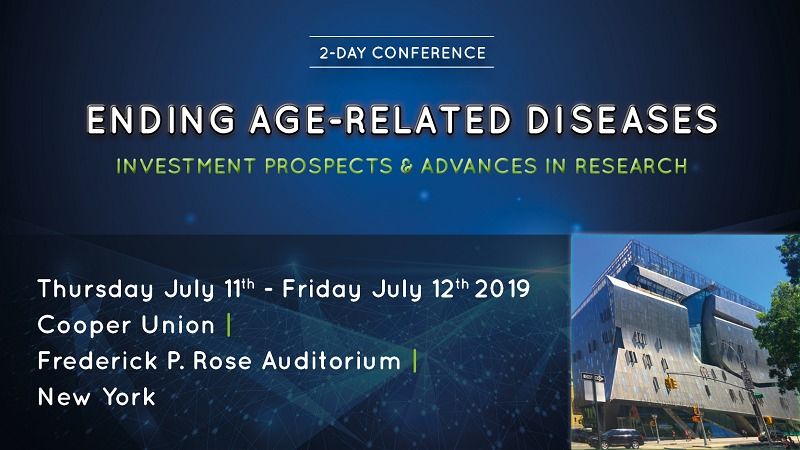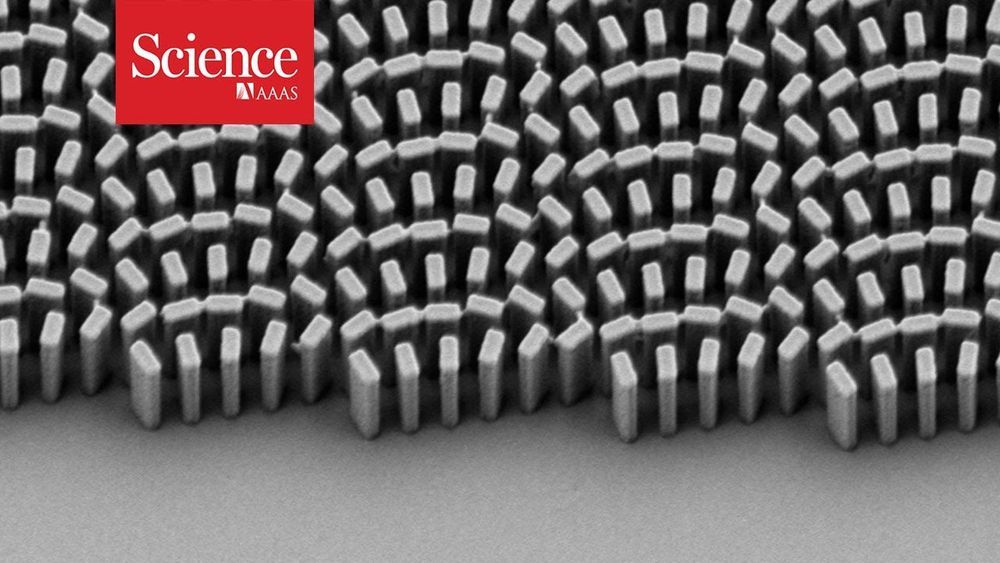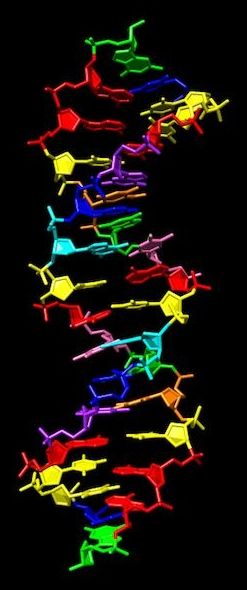With next-generation telescopes, tiny space probes, and more, scientists aim to search for life beyond our solar system—and make contact.
July 2019 will see the launch of our second Ending Age-Related Diseases conference at the Frederick P. Rose Auditorium, Cooper Union in New York City. The event was so popular last year that we decided to expand it to two full days of science and biotech business this year.
We will be bringing you the latest aging research, investment, and business knowledge from some of the top experts in the industry. We will be packing two days full of talks from and discussion panels with the people who are developing the technologies that could change the way we regard and treat aging forever.
With just over a month left to grab a lower-cost early bird ticket for the event, we thought that it would be a good opportunity to take a look at what we have in store. We have already announced lots of inspiring speakers from the research and business sectors of the industry, and here are just a few of them.
Here’s an important story I wrote on #cryonics for Quartz about a recent tragedy of a young girl and society’s reluctance to give people rights after death. I think something like “Danielle’s Law” could be important moving forward:
Cryogenics is facing legal hurdles for people who want their bodies to be frozen for the future.
Glass lenses, used in everything from smartphone cameras to microscopes, are bulky, heavy, and expensive. Now, a team of U.S. researchers has created high-power lenses from thin, flat arrays of nanosized towers of titanium dioxide that are thinner than a sheet of paper. The novel lenses are made from so-called metamaterials, engineered to control the way in which light waves interact (above). In this case, they are able to focus light across the visible spectrum. The setup allows them to magnify images up to 170 times with high resolution, as good as conventional state-of-the-art optics, the researchers report today in. The new lenses also have the potential to be fabricated—at much lower cost—with standard computer chip–making techniques. As a result, devices such as phones, tablets, and microscopes may soon be built with smaller, and cheaper, metalenses.
Physicists at MIT have for the first time calculated the pressure distribution inside a proton. One incredible finding by the researchers is that the core of a proton generates pressures greater than what’s found inside a neutron star. That discovery is so incredible because a neutron star is among the densest known objects in the universe.
Researchers in the US have built an “alien” DNA system from eight building block letters, so expanding the genetic code from four and doubling its information density. The new system meets all of the requirements for Darwinian evolution and can also be transcribed to RNA. It will be important for future synthetic biology applications and expands the scope of molecular structures that might be capable of supporting life, both here on Earth and more widely in the universe.
One of the main characteristics of life is that it can store and pass on genetic information. In modern-day organisms, this is done by DNA using just four building blocks: guanine, cytosine, adenine and thymine (G, A, C and T). Pairs of DNA strands form a double helix with A bonding to T and C bonding to G.
Four more building blocks .
Many people in Hawaii faced that very question on Jan. 13, 2018. That morning, at 8:07 a.m. local time, the Hawaii Emergency Management Agency sent out an alert advising residents to seek shelter from an incoming ballistic missile.
Unbeknownst to just about everyone at the time, however, the alert was a false alarm. Even the operator who sent out the alarm, issued over text messages and on TV and radio stations, thought it was real. But it was accidentally sent out during a shift change, and the incoming operator didn’t realize that the alert was part of a preparedness drill.
An erroneous alert about a nuclear attack was sent to Hawaii residents. The ensuing confusion and hysteria revealed that Americans are not prepared.
The Rise Of The Silicon Brain
Posted in internet, robotics/AI, space
Introduction
The rise of https://www.humanbrainproject.eu/en/silicon-brains/” target=”_blank” rel=” nofollow noopener noreferrer” data-ga-track=” ExternalLink: https://www.humanbrainproject.eu/en/silicon-brains/”>the https://www.humanbrainproject.eu/en/silicon-brains/” target=”_blank” rel=” nofollow noopener noreferrer” data-ga-track=” ExternalLink: https://www.humanbrainproject.eu/en/silicon-brains/”>silicon brain that can give rise to thought, emotion and behavior in a machine seems to be on the way. This is mainly due to rapid advances in software and hardware that are paving the way for next generation computational systems with cognitive abilities modeled after the human brain. This will prove to be a significant evolutionary development and especially important to enhancing https://www.informationweek.com/big-data/ai-machine-learning…id/1331480” target=”_blank” rel=” nofollow noopener noreferrer” data-ga-track=” ExternalLink: https://www.informationweek.com/big-data/ai-machine-learning…id/1331480”>machine intelligence for the complex problems that need to be solved for the future of humanity. So, as we envision a rapidly evolving silicon brain taking in the data from its surroundings in cyberspace, geospace, space (CGS) and run the data through some known/unknown computing processes and then tell the computer/machine to act, feel or behave in a certain way seems to bring humanity a lot more questions than answers. This is mainly because it is not known how the information on the silicon brain will be processed, stored or recalled; how the computer commands will emerge and become effective, and even how the silicon brain will experience the sensory world around it in CGS, and how it will think, feel or empathize.
As we evaluate all these emerging questions surrounding the rise of the silicon brain, there is an intense effort already going on to create neuromorphic chips that can mimic the human brain. There is also an initiative emerging to create a neuromorphic chip based on an octopus brain. While the emerging neuromorphic chips are still nowhere near as capable as a human brain or octopus brain, much is expected to change for machine intelligence very rapidly in the coming years, as these chips begin learning to process available sensory data from CGS to evolve their abilities in real time for the goals defined for them.








